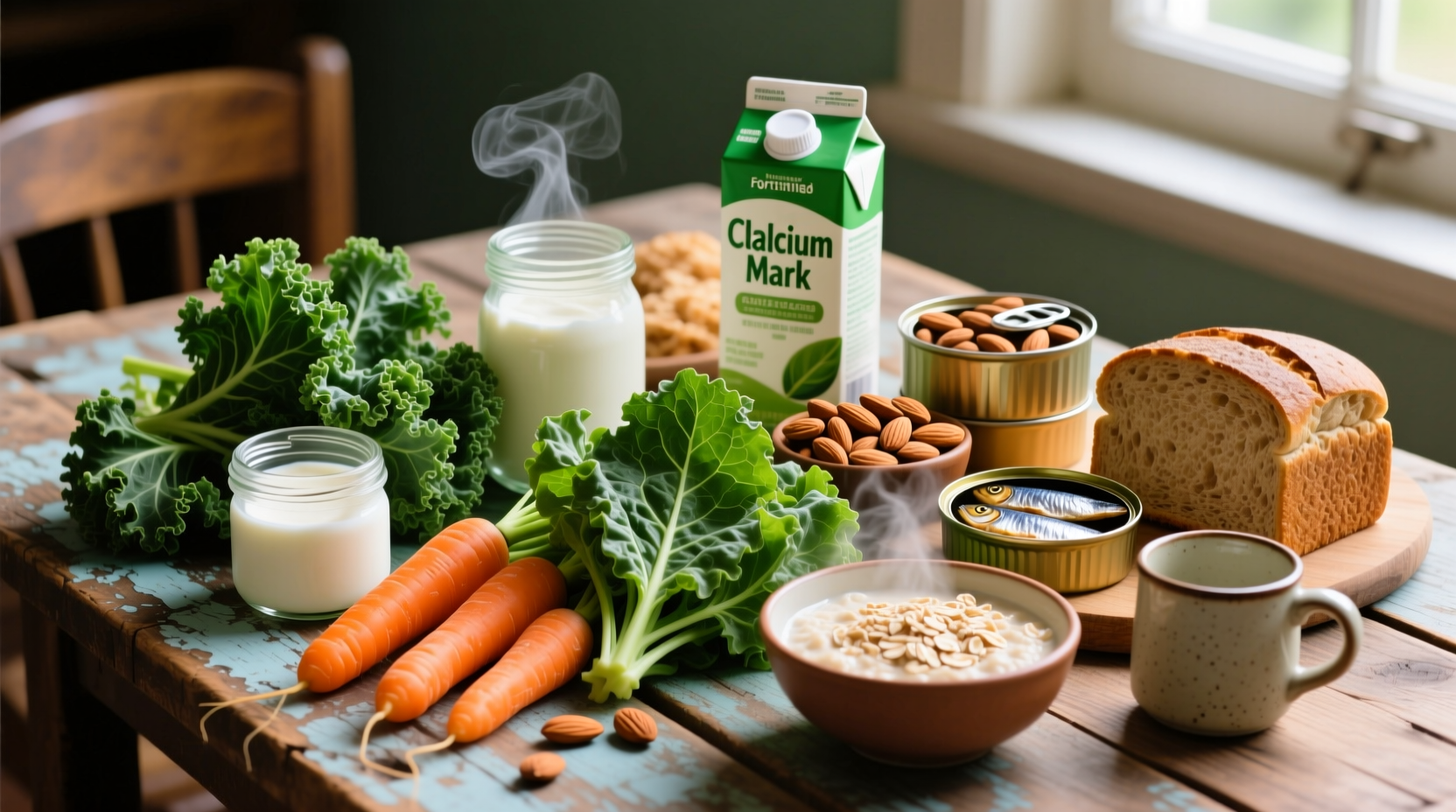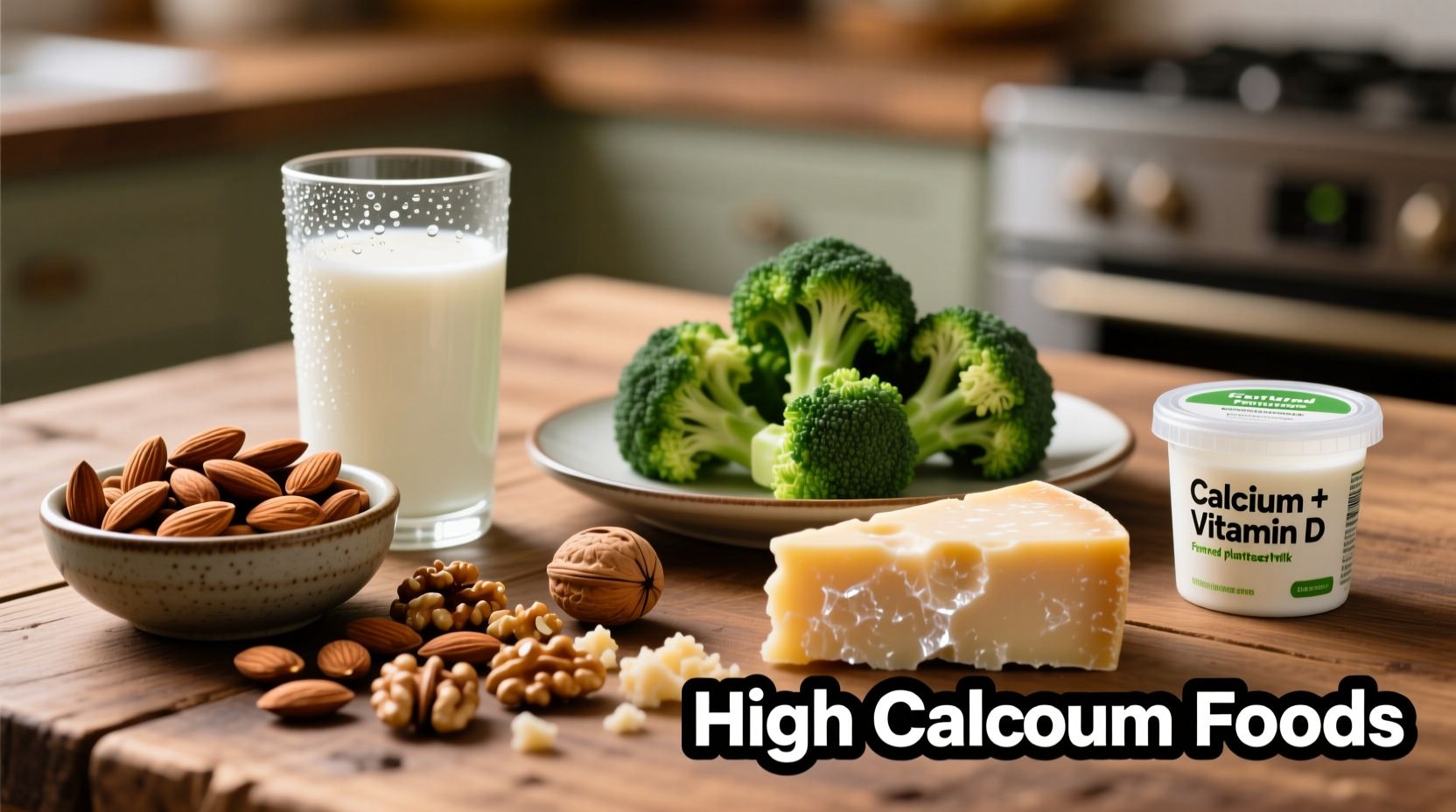Calcium-rich foods include dairy products like milk, yogurt, and cheese; leafy greens such as kale and bok choy; canned fish with bones like sardines and salmon; fortified plant milks; tofu made with calcium sulfate; and almonds. Adults aged 19-50 need 1,000 mg of calcium daily, with higher requirements for women over 50 and all adults over 70.
Discover exactly which foods deliver the most bioavailable calcium for strong bones and overall health. This comprehensive guide reveals not just what food has calcium, but how much you actually get per serving, which sources absorb best, and practical ways to meet your daily needs—whether you're dairy-free, vegan, or following a standard diet.
Why Calcium Matters More Than You Think
Calcium isn't just for building strong bones—it's essential for muscle function, nerve transmission, blood clotting, and heart health. According to the National Institutes of Health, inadequate calcium intake increases osteoporosis risk and may contribute to hypertension. Most adults don't meet daily requirements, with women and older adults particularly vulnerable to deficiency.
Your Daily Calcium Targets
Daily calcium needs vary by age and gender. The NIH Office of Dietary Supplements provides these evidence-based recommendations:
| Age Group | Daily Calcium Requirement | Special Considerations |
|---|---|---|
| Children 4-8 years | 1,000 mg | Growth phase requires consistent intake |
| Adolescents 9-18 years | 1,300 mg | Peak bone mass development period |
| Adults 19-50 years | 1,000 mg | Men and women equally at risk of deficiency |
| Women 51-70 years | 1,200 mg | Post-menopausal bone density concerns |
| Men 51-70 years | 1,000 mg | Requirement increases after age 70 |
| Adults 71+ years | 1,200 mg | All genders require higher intake |
Top Calcium Food Sources by Category
Not all calcium sources are equally effective. Bioavailability—the amount your body can actually absorb—varies significantly between food types. Dairy calcium has approximately 30% absorption, while some plant sources range from 5-60% depending on compounds like oxalates.
Dairy Powerhouses
Dairy remains the most efficient calcium source for most people. A single serving often provides 30% or more of your daily needs:
- Plain yogurt (8 oz): 415 mg (32-42% absorption)
- Milk (1 cup): 300 mg
- Cheddar cheese (1.5 oz): 307 mg
- Calcium-fortified cottage cheese (1 cup): 350 mg
Plant-Based Calcium Champions
For dairy-free diets, these foods deliver substantial calcium with good bioavailability:
- Calcium-set tofu (½ cup): 250-800 mg (varies by brand)
- Fortified plant milks (1 cup): 300 mg
- Kale (1 cup cooked): 179 mg (40-50% absorption)
- Bok choy (1 cup cooked): 158 mg
- Almonds (1 oz): 75 mg

Surprising Calcium Sources
These often-overlooked foods contribute meaningful calcium amounts:
- Canned sardines with bones (3 oz): 325 mg
- Canned salmon with bones (3 oz): 180 mg
- White beans (1 cup): 161 mg
- Figs (½ cup dried): 120 mg
- Blackstrap molasses (1 tbsp): 172 mg
Calcium Absorption: What Really Matters
Getting calcium into your body is only half the battle. Several factors dramatically impact how much you actually absorb:
Boosters and Blockers
Vitamin D significantly enhances calcium absorption—aim for 600-800 IU daily through sunlight, fatty fish, or fortified foods. Conversely, high sodium intake increases calcium excretion, while excessive caffeine and alcohol impair absorption.
Plant-based eaters should note that oxalates in spinach, Swiss chard, and beet greens bind calcium, reducing absorption to just 5%. Choose low-oxalate greens like kale and collards instead for better results.
Practical Calcium-Boosting Strategies
Implement these evidence-based approaches to maximize your calcium intake:
Smart Pairing Techniques
Combine calcium-rich foods with vitamin D sources: add mushrooms (exposed to UV light) to your spinach salad, or enjoy fortified cereal with vitamin D-fortified plant milk. Avoid consuming high-fiber bran products with calcium sources, as fiber can interfere with absorption.
Daily Integration Plan
Create consistent calcium habits without drastic diet changes:
- Breakfast: Fortified plant milk in smoothies or cereal (300 mg)
- Lunch: Tofu stir-fry with bok choy (200 mg)
- Snack: Almonds and dried figs (195 mg)
- Dinner: White bean soup with kale (250 mg)
Total: 945 mg—nearly your full daily requirement from whole foods.
Special Dietary Considerations
Different eating patterns require tailored approaches to meet calcium needs:
For Lactose-Intolerant Individuals
Fermented dairy products like yogurt and hard cheeses often cause fewer issues. Lactose-free milk provides identical calcium content. The NIH confirms that many lactose-intolerant people can tolerate up to 12 grams of lactose (about 1 cup of milk) in divided servings throughout the day.
Vegan Calcium Planning
Vegans need to be more strategic. Research published in the American Journal of Clinical Nutrition shows that carefully planned vegan diets can meet calcium requirements through fortified foods and low-oxalate greens. Include at least three servings daily of calcium-rich plant foods totaling 700-1,000 mg.
Calcium Through the Decades: Evolving Understanding
Nutritional science regarding calcium has evolved significantly:
- 1970s-1980s: Focus solely on dairy as the primary calcium source
- 1990s: Recognition of plant-based sources but limited understanding of bioavailability
- 2000s: Research highlighting oxalate impact on plant calcium absorption
- 2010s-present: Holistic approach considering vitamin D synergy and individual absorption factors
This evolution explains why older dietary advice often overemphasized dairy while underestimating effective plant-based options.











 浙公网安备
33010002000092号
浙公网安备
33010002000092号 浙B2-20120091-4
浙B2-20120091-4